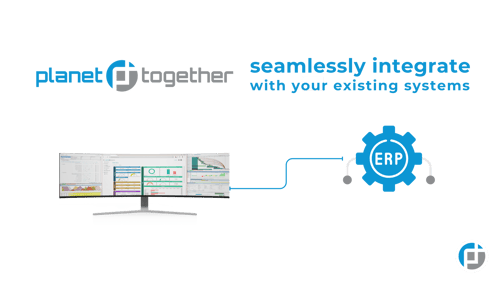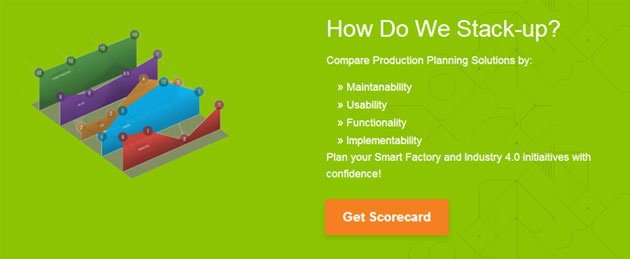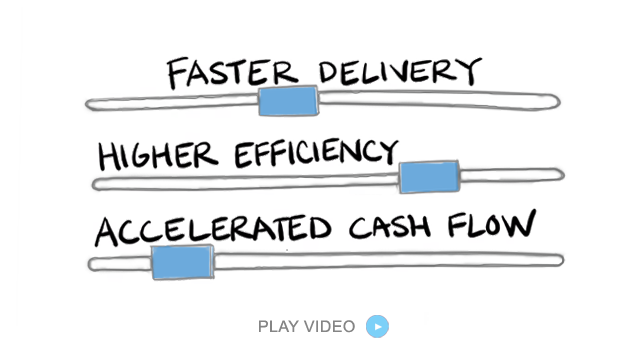Cost Control in Industrial Manufacturing: How Plant Managers Can Leverage PlanetTogether with ERP Systems
In industrial manufacturing, cost control isn’t just about trimming budgets—it's about building a smarter, more resilient operation. For Plant Managers who live and breathe efficiency, the daily challenge is striking the perfect balance between production output, resource utilization, and bottom-line performance.
Whether you're overseeing a plant that manufactures heavy machinery, automotive components, or electrical systems, you likely feel the pressure to do more with less—less labor, less material waste, and fewer unplanned downtimes. But achieving real cost control isn't about working harder; it’s about working smarter. That’s where intelligent scheduling solutions like PlanetTogether—especially when integrated with enterprise systems like SAP, Oracle, Microsoft Dynamics, Kinaxis, or Aveva MES—come into play.
In this post, we’ll explore practical ways Plant Managers can implement better cost control measures through the right technology stack, with a spotlight on PlanetTogether’s integrations.

Understanding the True Cost Drivers in Industrial Manufacturing
Cost control is more complex in industrial manufacturing than in many other sectors due to the number of variables that impact operating expenses. Here are some of the key cost drivers:
Inefficient production scheduling
Excess inventory and raw material waste
Machine downtime and maintenance costs
Labor inefficiencies
Energy consumption and sustainability mandates
Each of these factors can quietly erode margins if not carefully managed. Traditional spreadsheets or siloed planning systems often lack the responsiveness and visibility required to respond to real-time changes—whether from the shop floor or the supply chain.

Why Advanced Planning and Scheduling (APS) Matters
While your ERP system (SAP, Oracle, Microsoft Dynamics, etc.) holds critical data about procurement, finance, and HR, it's often not agile enough for fast-paced production planning. This is where an Advanced Planning and Scheduling (APS) system like PlanetTogether fills the gap.
PlanetTogether allows Plant Managers to:
Sequence jobs optimally across work centers
Reduce changeovers and production bottlenecks
Synchronize labor and machine availability
Simulate scenarios to test cost-saving strategies
Align production schedules with real-time shop floor constraints

The Real Value: Integration with SAP, Oracle, Microsoft, Kinaxis, or Aveva
A standalone APS tool is powerful—but when integrated with your core enterprise systems, it becomes a real game-changer for cost control.
Let’s take a look at how this integration drives tangible results.
PlanetTogether + SAP (ERP or S/4HANA)
SAP provides robust data on orders, inventory, and capacity. When integrated with PlanetTogether, the planning process becomes dynamic rather than reactive.
Real-time BOM and routing data from SAP flow into PlanetTogether.
Work orders generated in PlanetTogether are sent back to SAP for execution.
The result? You reduce material waste, optimize resource utilization, and make data-driven decisions that prevent cost overruns.
Example: A heavy equipment manufacturer using SAP ECC integrated with PlanetTogether cut machine idle time by 22% and improved on-time delivery by 18%, simply by synchronizing their planning data and shop floor operations.
PlanetTogether + Oracle Cloud or E-Business Suite
Oracle handles procurement, cost accounting, and inventory control effectively. But its native scheduling tools can’t compete with the flexibility of PlanetTogether.
By integrating PlanetTogether with Oracle:
You can simulate "what-if" scenarios to see the cost impact of rush orders or equipment outages.
Get alerts on cost thresholds when a schedule adjustment would drive up expenses.
Improve labor forecasting and reduce reliance on overtime.
A mid-sized manufacturer of electrical panels using Oracle Cloud Applications found that the integrated approach helped reduce overtime costs by 30% within the first quarter.
PlanetTogether + Microsoft Dynamics 365
For manufacturers using Microsoft Dynamics 365, integrating PlanetTogether provides a visual, interactive scheduling layer on top of real-time ERP data.
Use drag-and-drop scheduling to immediately see cost impacts of rescheduling.
Leverage Power BI dashboards that visualize KPIs like cost-per-unit, scrap rates, and machine uptime.
Automate constraint-based planning without losing sight of financial implications.
This integration is particularly effective for discrete manufacturers that require frequent changeovers or deal with high product variability.
PlanetTogether + Kinaxis (RapidResponse)
While Kinaxis is a leader in supply chain orchestration, it doesn’t handle production scheduling at the plant level. That’s where PlanetTogether adds critical value.
Kinaxis manages macro-level supply and demand balancing.
PlanetTogether optimizes the micro-level execution in the plant.
The integration helps you connect global demand shifts to plant-level cost-saving actions.
This is especially powerful for multi-site operations where supply volatility needs to be absorbed by flexible, cost-effective production planning.
PlanetTogether + Aveva MES
Manufacturers who use Aveva for MES gain precise shop floor data—but without APS, there’s a gap between insight and action.
PlanetTogether uses real-time machine and operator data from Aveva to dynamically adjust the schedule.
By avoiding overproduction and machine clashes, you can control energy costs and reduce expensive rework.
The result is a closed-loop manufacturing execution system with cost control built in.
Cost Control Wins: From Planning to Execution
When Plant Managers align their planning and execution systems through integration, the results are compelling. Here’s how the pieces come together:
| Area | Challenge | Solution with PlanetTogether + Integration | Outcome |
|---|---|---|---|
| Scheduling | Manual or delayed updates to production orders | Real-time scheduling using ERP/MES data | Reduced changeovers and downtime |
| Inventory | Overstocking or frequent shortages | Demand-driven replenishment with accurate forecasts | Lower carrying costs |
| Labor | Overtime due to poor planning | Synchronized labor scheduling with capacity constraints | Improved labor efficiency |
| Maintenance | Unexpected breakdowns | Integrated preventive maintenance planning | Fewer costly repairs |
| Energy | High energy consumption during peak hours | Load-leveling through schedule simulation | Lower utility bills |
Getting Started: Cost Control Doesn’t Have to Be Complex
If you're a Plant Manager looking to tighten cost control without disrupting operations, here are three steps to take:
Assess Your Current Tech Stack
Understand how your existing ERP (SAP, Oracle, Microsoft), supply chain tools (Kinaxis), or MES (Aveva) are being used—and where scheduling gaps exist.
Run a Pilot with PlanetTogether
Test the APS capabilities on a single line or product family. Measure key metrics like changeover time, labor usage, and throughput.
Integrate for Maximum Impact
Work with your IT team or systems integrator to connect PlanetTogether with your ERP or MES. Focus on real-time data flow and user adoption.
Cost control is no longer just a financial objective—it’s a strategic enabler. By integrating PlanetTogether with your core enterprise systems, you can:
Make smarter, faster production decisions
Anticipate and mitigate disruptions
Align plant operations with corporate financial goals
In industrial manufacturing sector, Plant Managers who invest in intelligent, integrated planning tools will not only control costs—they’ll lead the charge in operational excellence.
Ready to take control of your plant’s costs? Discover how PlanetTogether can integrate seamlessly with SAP, Oracle, Microsoft, Kinaxis, or Aveva to deliver smarter scheduling and better business results. Contact us today to learn more about how PlanetTogether can help you achieve your goals and drive success in your industry.
Let’s make cost control a competitive advantage.
Topics: Industrial Manufacturing, PlanetTogether Software, Integrating PlanetTogether, Simulate "What-if" Scenarios, Real-time BOM and Routing Data, Power BI Dashboards, Closed-Loop Manufacturing





















LEAVE A COMMENT